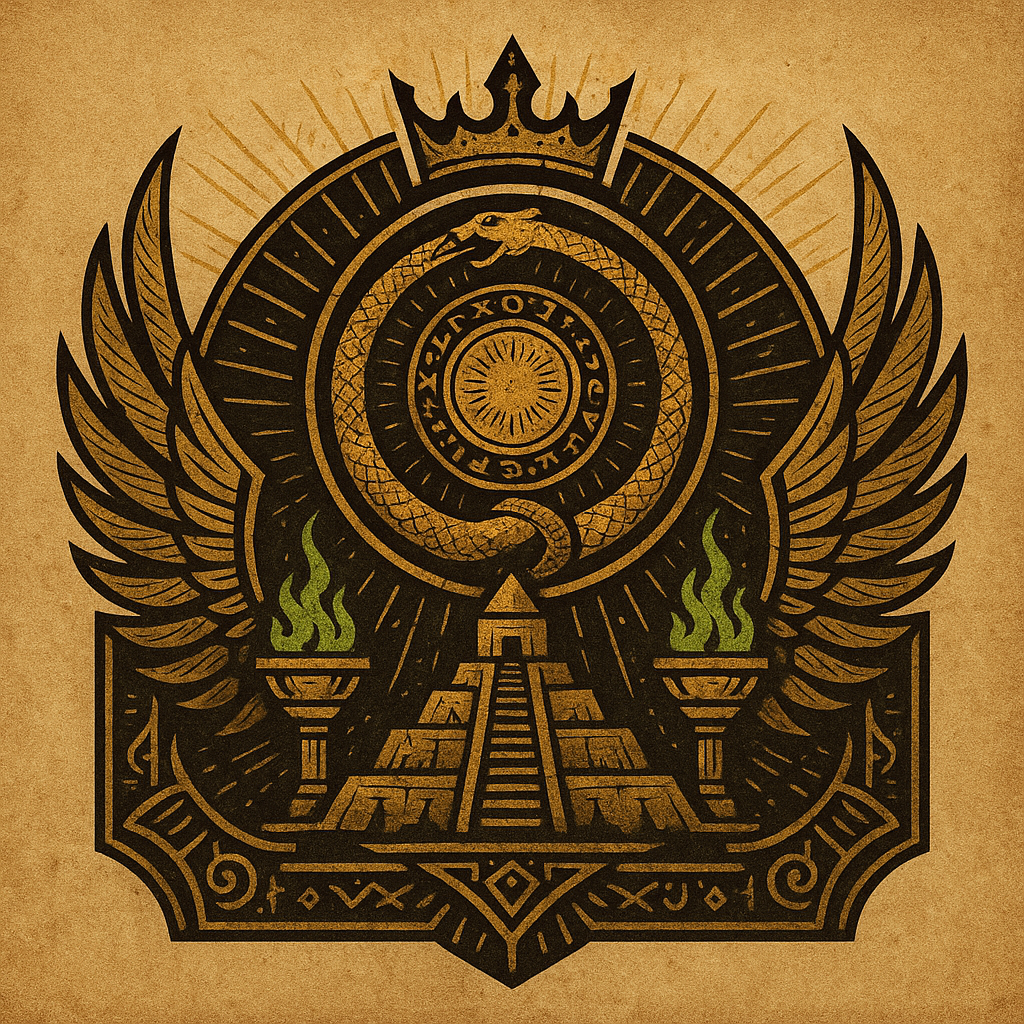The Eternal Empire
Echoes of the Legacy
Long before the shifting sands of the Kartagis Desert buried its secrets, the Eternal Empire reigned supreme across Herja and beyond. Its name still echoes in the ruins, artifacts, and myths that linger, shaping the world’s present while hinting at a golden past. The empire’s collapse marked the end of an era, but its legacy continues to exert a powerful influence over places like Dum Ramil, where its remnants are both treasure and curse.
An Empire of Boundless Ambition
The Eternal Empire was a civilisation of unparalleled advancement, blending arcane magic and cutting-edge technology in ways that modern minds can scarcely fathom. Its cities were marvels of architecture, its people masters of both craft and combat. The Spire of Eternity, a towering beacon of their aspirations, once stretched toward the heavens, promising eternal youth and vitality to its people.
But ambition turned to hubris. The empire’s grand experiment to share eternal life with its citizens ended in disaster, unleashing a cataclysmic event that transformed lush lands into deserts and thriving cities into tombs. Only a handful of its denizens retained their sanity, retreating into obscurity as the world shifted around them.
Relics of a Forgotten Era
The legacy of the Eternal Empire endures in the form of ruins scattered across the Kartagis Desert. These crumbling cities and labyrinthine crypts are rife with treasures and dangers alike. Among the most coveted are Sacred Artifacts, devices imbued with the empire’s magical ingenuity. From weapons that harness elemental power to tools capable of reshaping the land, these artifacts defy the limitations of contemporary craftsmanship.
Technique Scrolls, another prized remnant, contain knowledge of combat styles and magical practices thought lost to time. The Sects of Dum Ramil jealously hoard these scrolls, drawing upon their teachings to gain an edge in the city’s relentless power struggles.
The Spire of Eternity and the Black Passing
The Spire of Eternity stands as both a monument and a warning. Though its grandeur has faded, its silhouette still haunts the horizon for those who dare to wander the deeper desert. The Black Passing, a treacherous ravine near the Spire, is a stark reminder of the empire’s downfall. Here, vapours seep from the earth, robbing the unwary of their sight and leaving only white, lifeless eyes behind.
Legends speak of undead guardians—once proud citizens of the empire—roaming the ruins near the Spire. These husks of humanity are said to defend the secrets of the Eternal Empire, their eternal suffering a grim testament to the cost of unchecked ambition.
Eternal Empire in Dum Ramil
The Eternal Empire’s influence is deeply woven into the fabric of Dum Ramil. The city’s foundation is built upon one of the empire’s ancient metropolises, its towering walls and intricate designs still bearing the marks of their original creators. While the inhabitants of Dum Ramil have patched and repurposed much of this architecture, the core of the city remains a testament to the empire’s ingenuity.
Artifacts and techniques from the Eternal Empire are central to Dum Ramil’s economy and culture. Adventurers scour the ruins for treasures, while Sects vie for control of ancient caches and knowledge. These remnants have not only shaped the city’s internal dynamics but have also made Dum Ramil a focal point for scholars, traders, and treasure hunters from across Deuslair.
Myths and Warnings
The Eternal Empire’s downfall serves as a cautionary tale in Dum Ramil. Stories of its rise and catastrophic fall are recounted in hushed tones, often as warnings against hubris and overreach. The Rageblood Cultists, however, view the empire’s collapse through a different lens. They see it as a holy event, believing that the chaos it unleashed was a divine trial, and they seek to harness its remnants to usher in a new era of conquest.
Yet for most in Dum Ramil, the Eternal Empire remains a source of inspiration and dread. Its ruins are places of wonder and peril, and its artifacts symbolize both power and the fragility of greatness.
Conclusion
The Eternal Empire may have crumbled long ago, but its shadow stretches across time. In Dum Ramil, its legacy is as much a part of daily life as the sun-scorched sands. It reminds all who dwell there that while the strong may thrive, even the mightiest can fall—a lesson etched in the very stones of the city.
The ruins whisper of glory and despair, their silent stones a testament to the heights of ambition and the depths of folly. The Eternal Empire is gone, yet it lingers, shaping the hands of those who dare to claim its remnants.




Comments